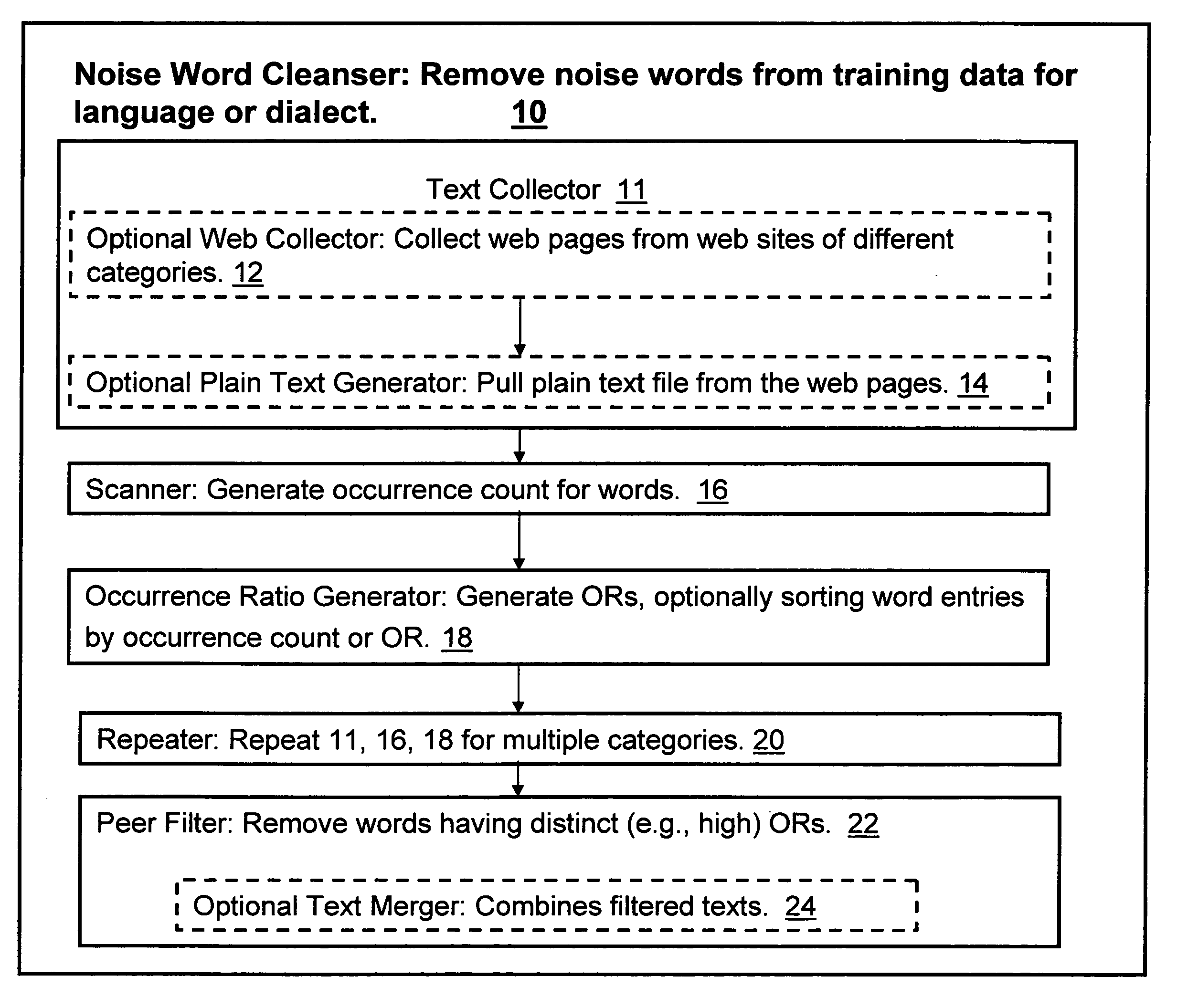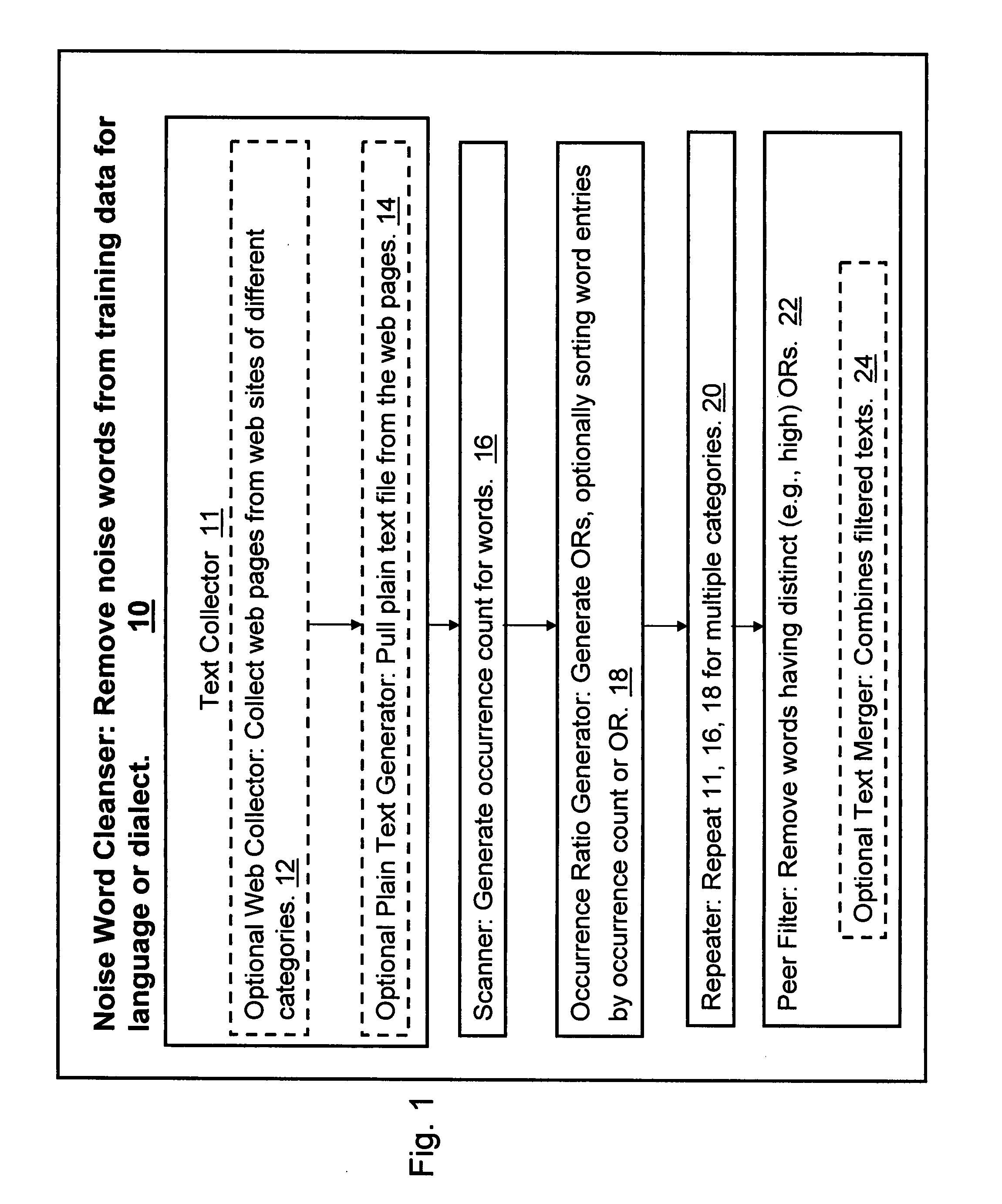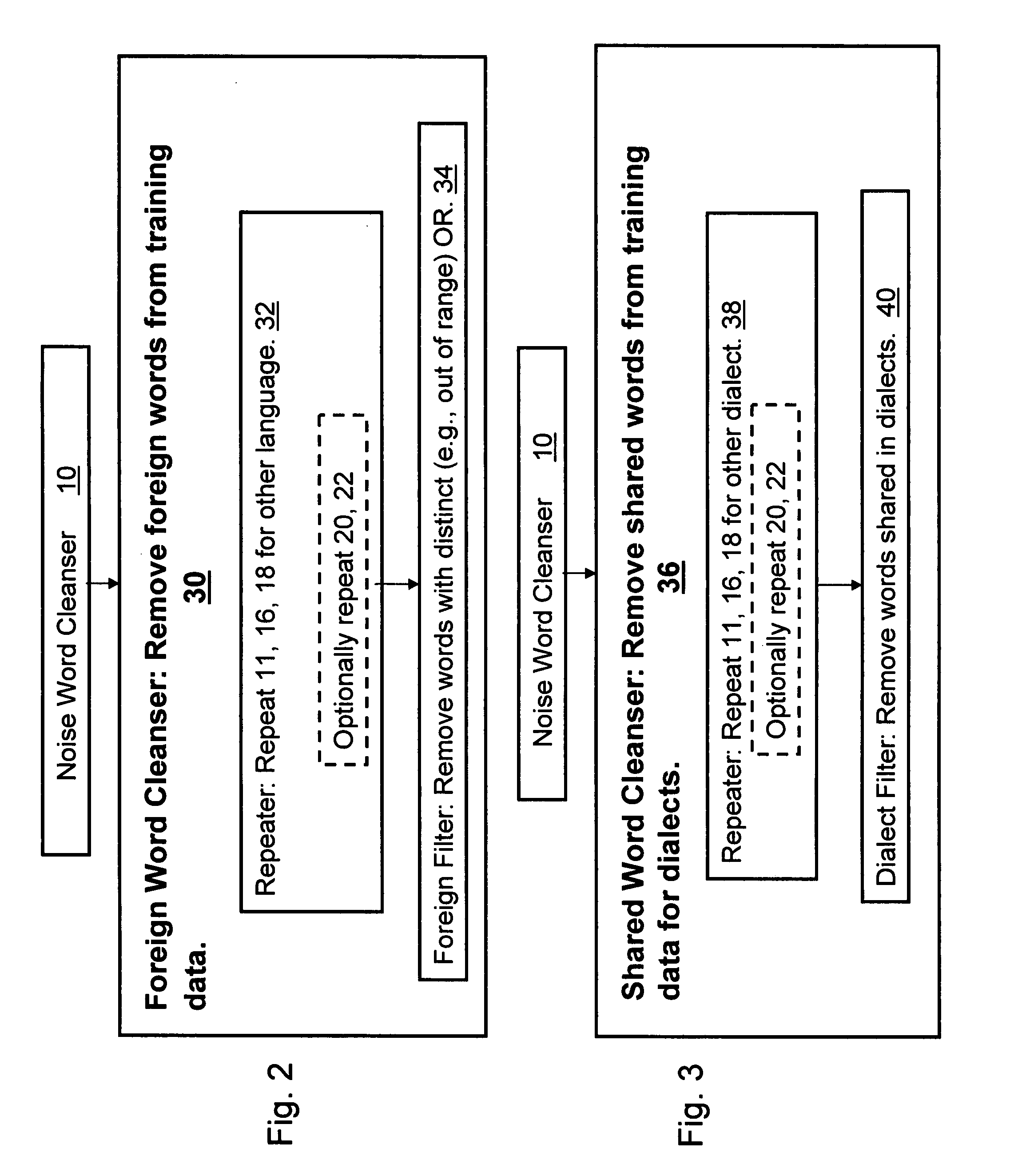Data cleansing system and method
- Summary
- Abstract
- Description
- Claims
- Application Information
AI Technical Summary
Benefits of technology
Problems solved by technology
Method used
Image
Examples
example
[0052]As discussed hereinabove, it has been found that texts written in particular languages tend to have a relatively consistent occurrence ratio of frequently used words. It has also been found that as the occurrence of words increases, their occurrence ratio patterns become more consistent. Conversely, words of lower occurrence tend to be jargon, misspelled or foreign words. For instance, the following Table III is a list of commonly occurring words with their occurrence ratios, in documents from three distinct categories as determined by modules 11 to 20 of FIG. 1.
TABLE IIIEDUBOOKLAW4.5004the4.1772the5.4888the3.0037of2.7073of3.6267of2.9034and2.8171and2.2323and2.4573to2.2008to2.5898to1.6243in1.4443in1.6613in1.0828is0.8697is0.9719is1.0435that0.6837that1.3166that1.0184for1.0155for0.8894for0.703The0.8162The0.6778The
[0053]In addition, documents collected from a specific category may include words (e.g., properly spelled and non-jargon) that occur with more frequency than in other cat...
PUM
 Login to View More
Login to View More Abstract
Description
Claims
Application Information
 Login to View More
Login to View More - R&D
- Intellectual Property
- Life Sciences
- Materials
- Tech Scout
- Unparalleled Data Quality
- Higher Quality Content
- 60% Fewer Hallucinations
Browse by: Latest US Patents, China's latest patents, Technical Efficacy Thesaurus, Application Domain, Technology Topic, Popular Technical Reports.
© 2025 PatSnap. All rights reserved.Legal|Privacy policy|Modern Slavery Act Transparency Statement|Sitemap|About US| Contact US: help@patsnap.com



